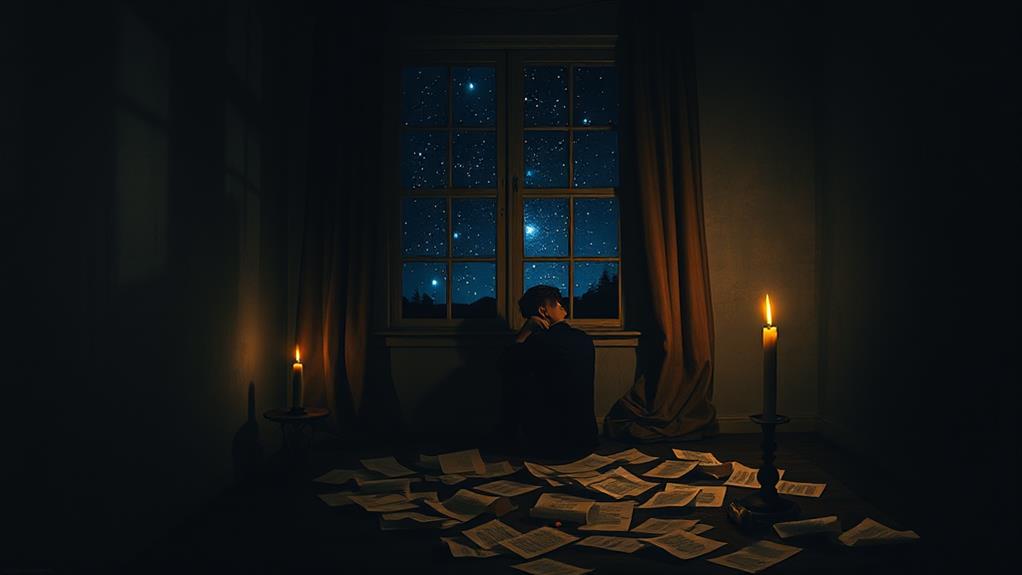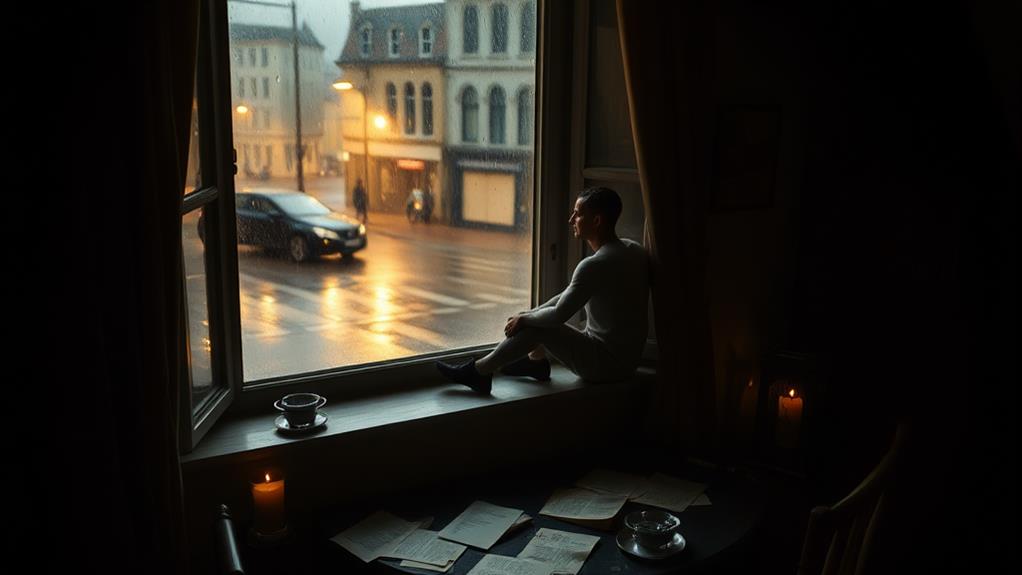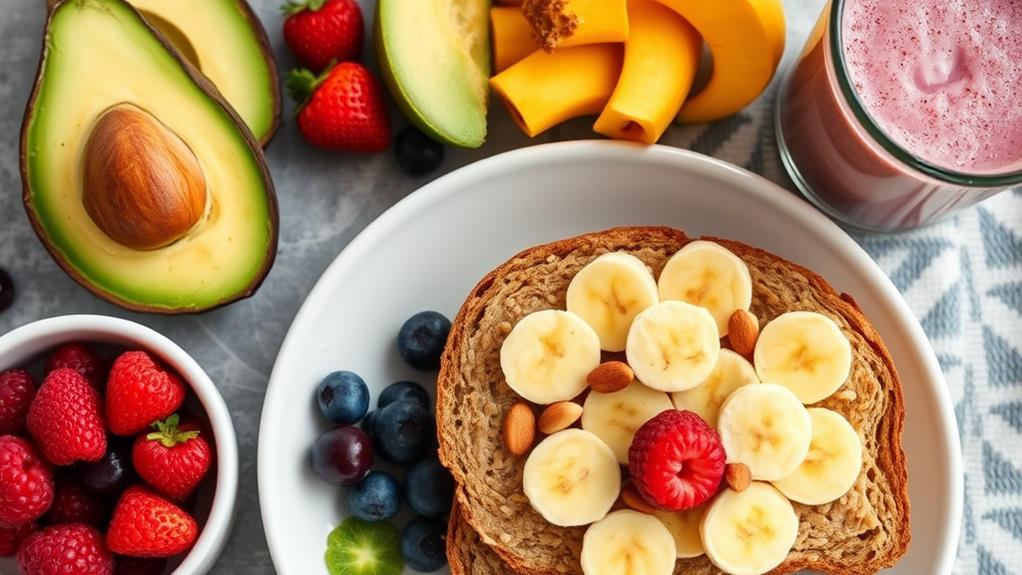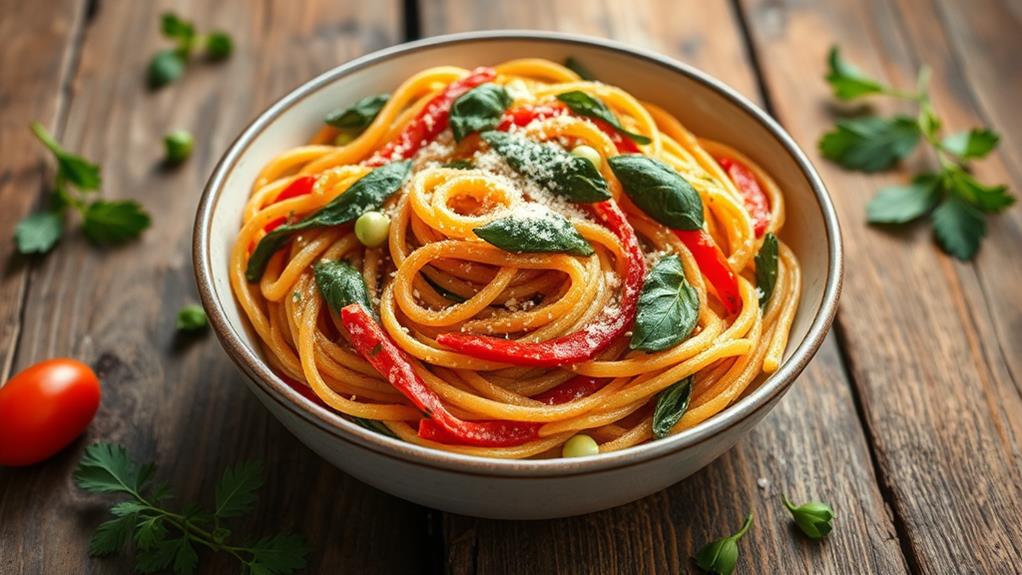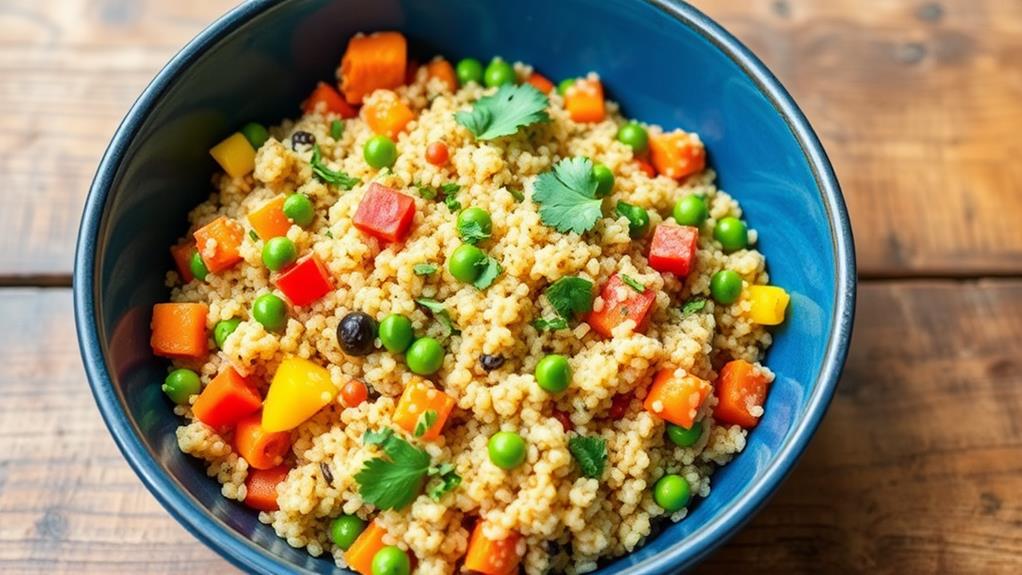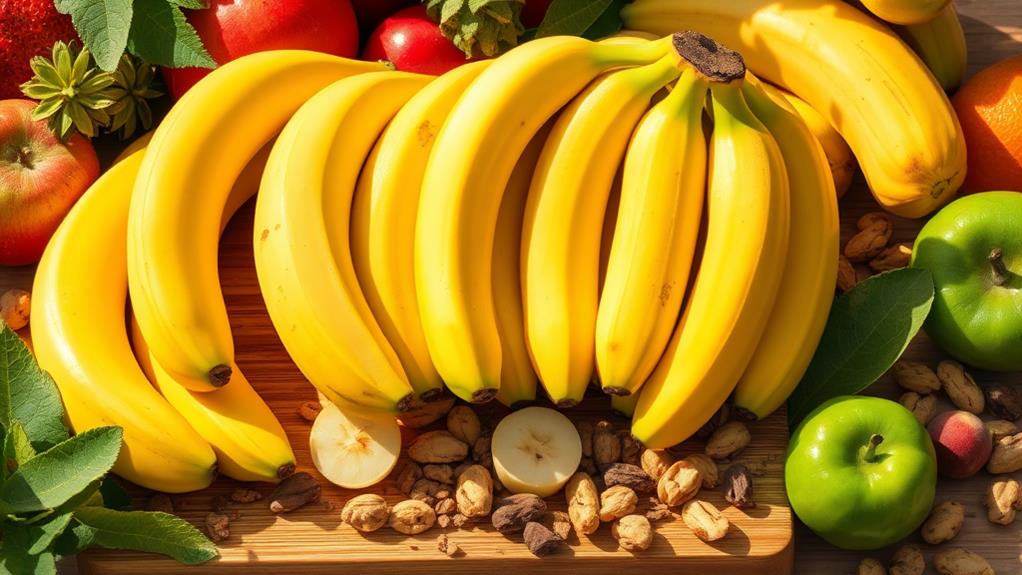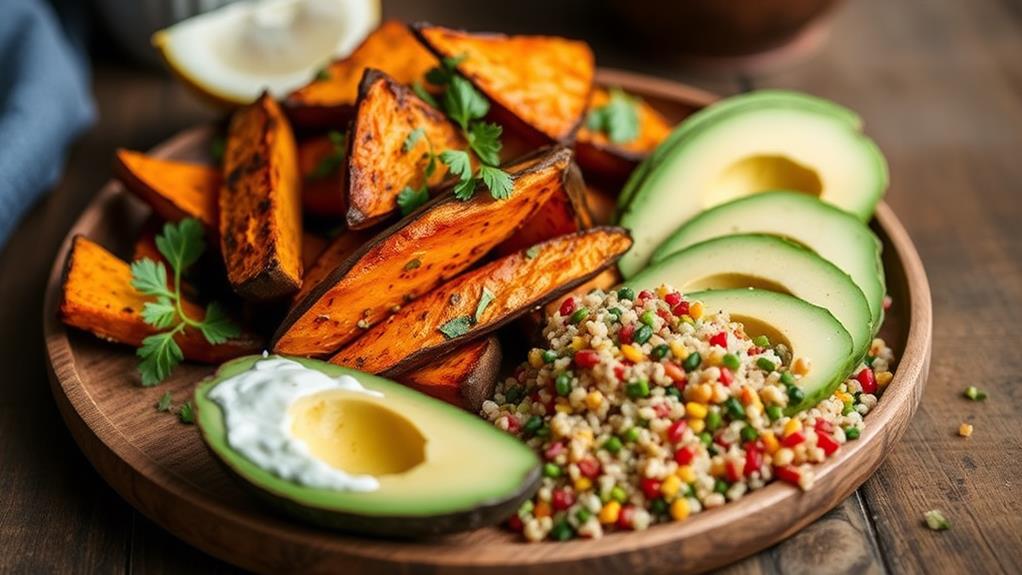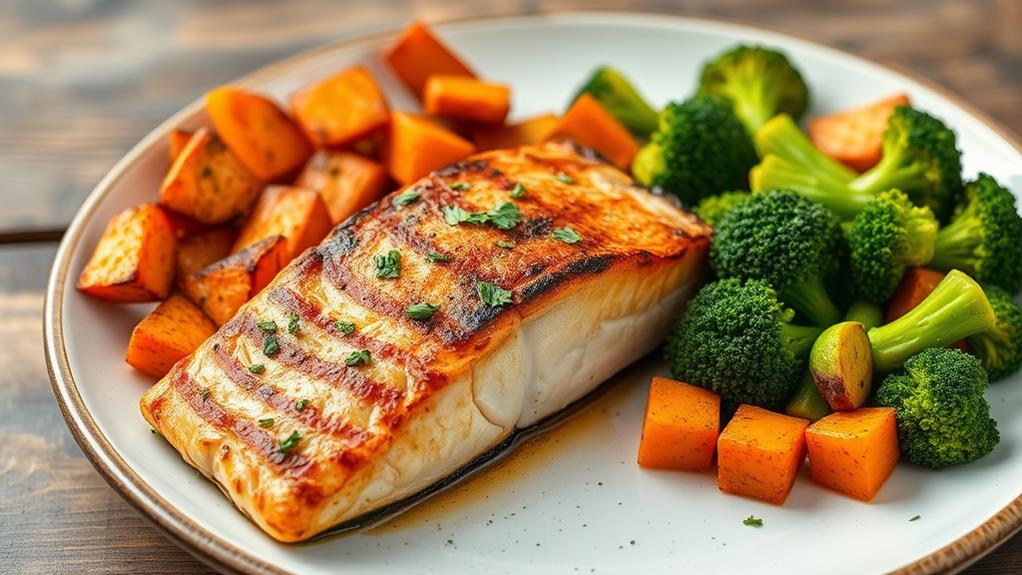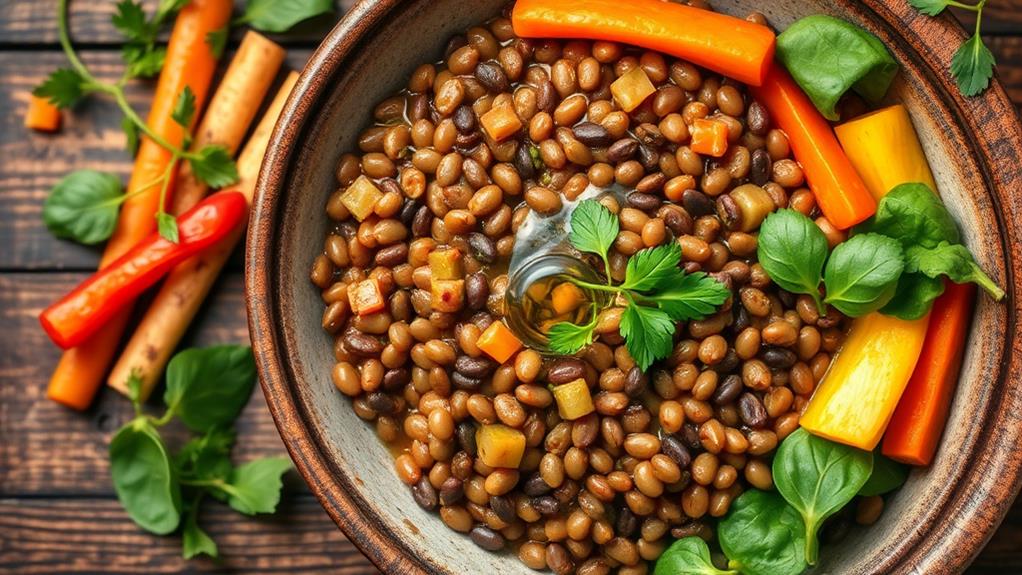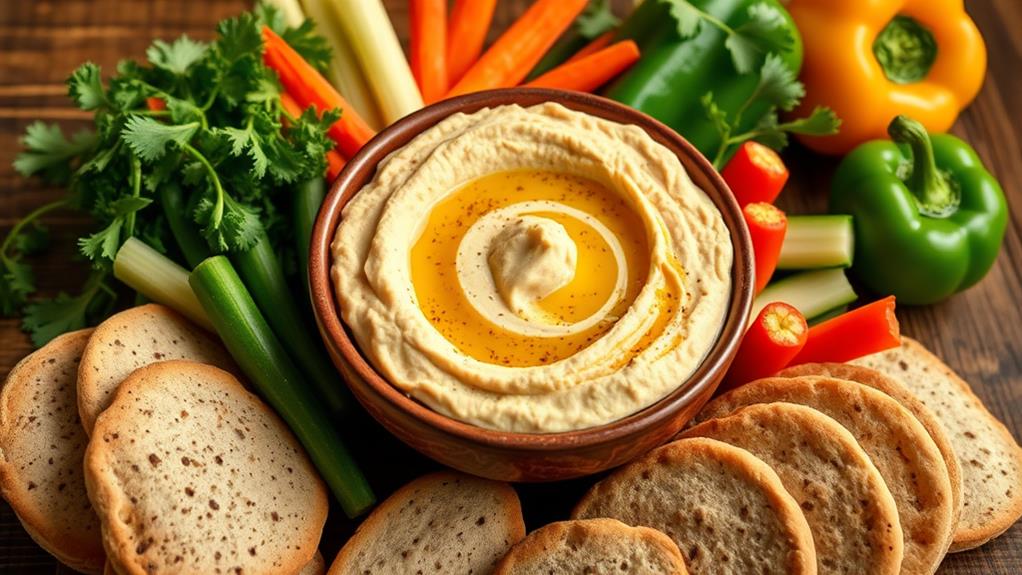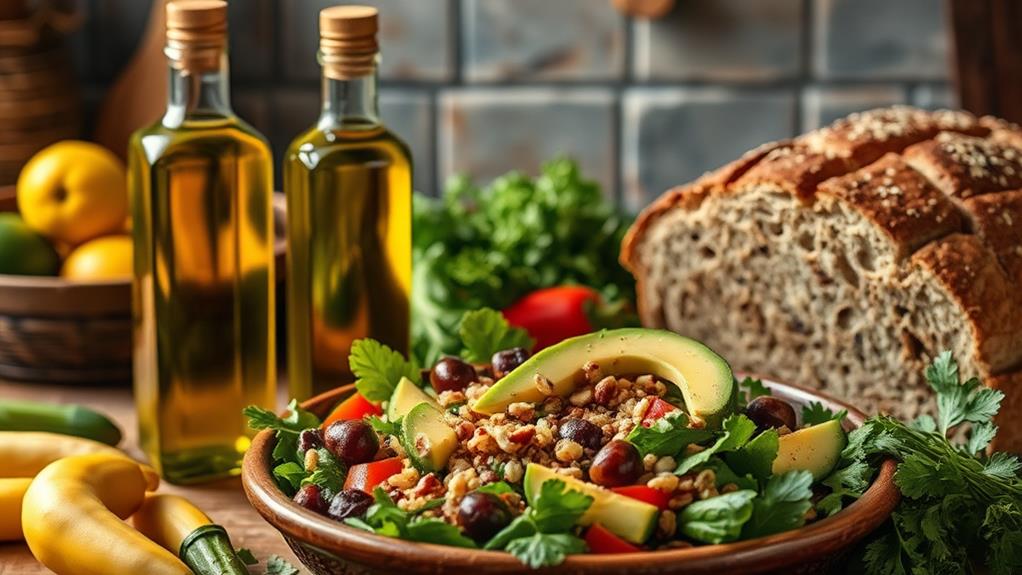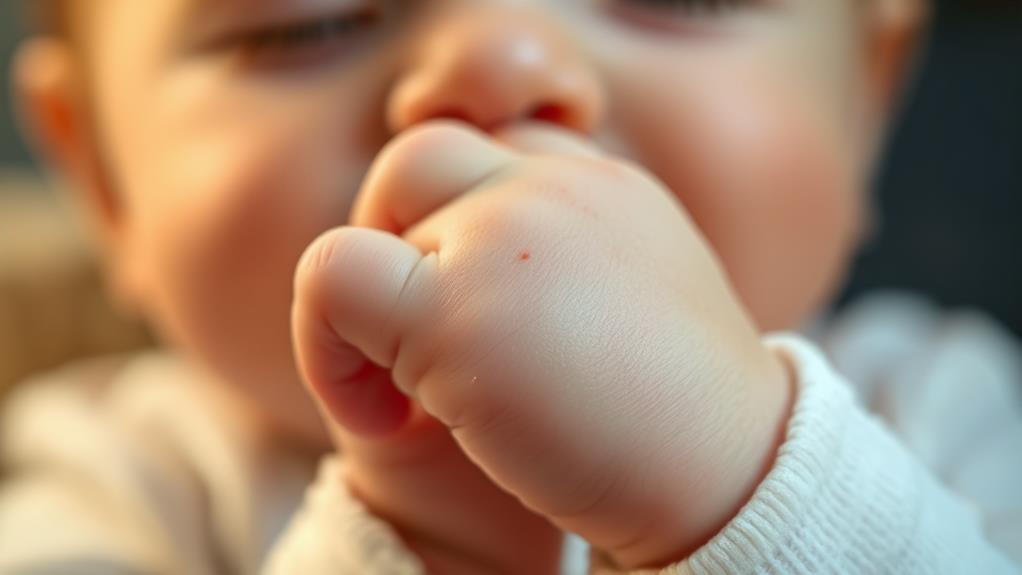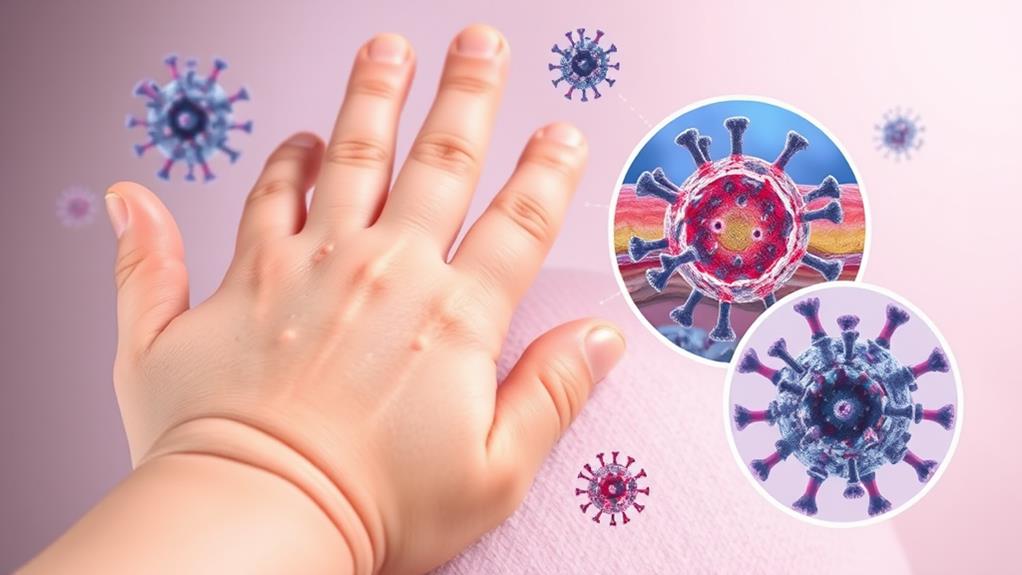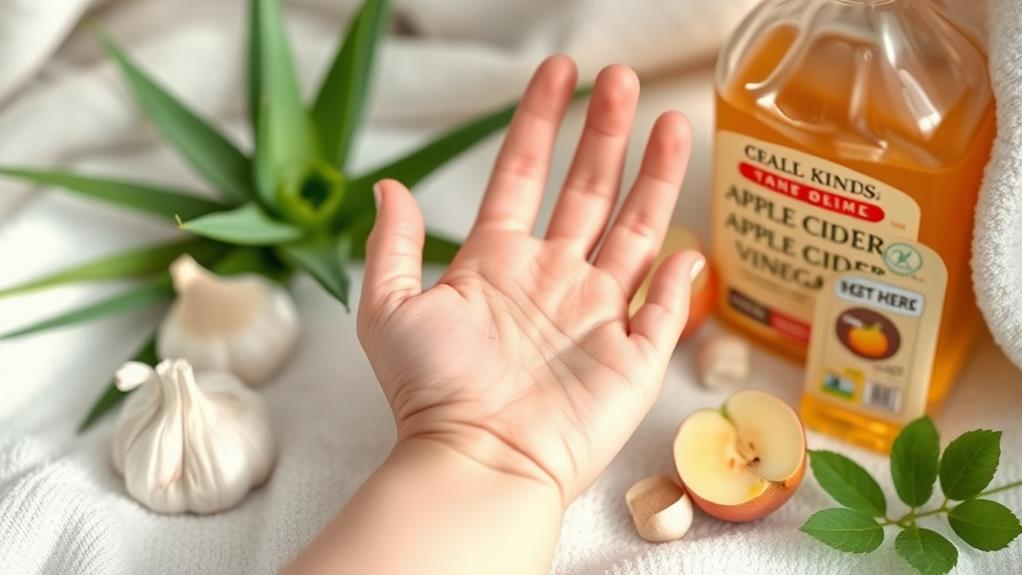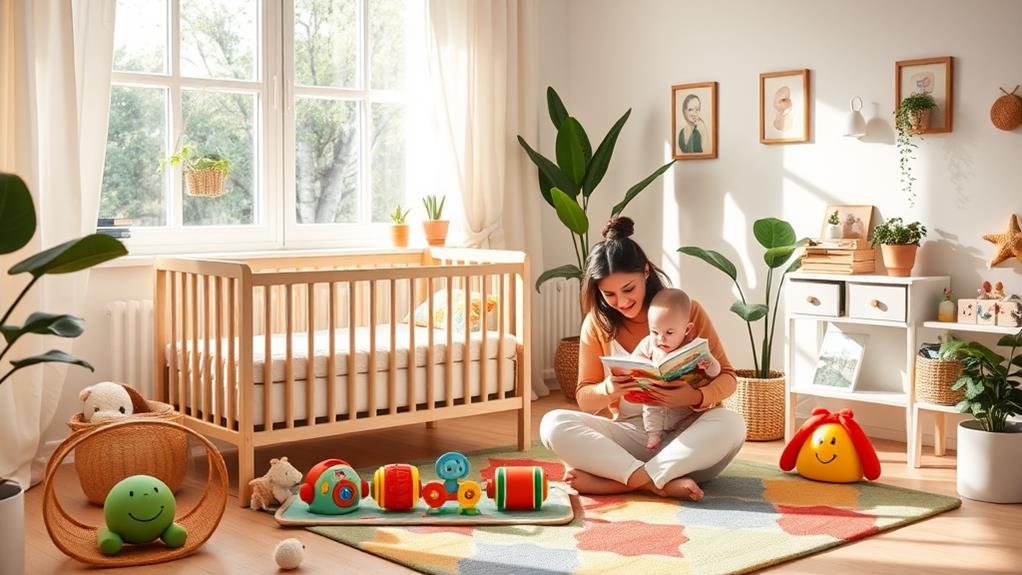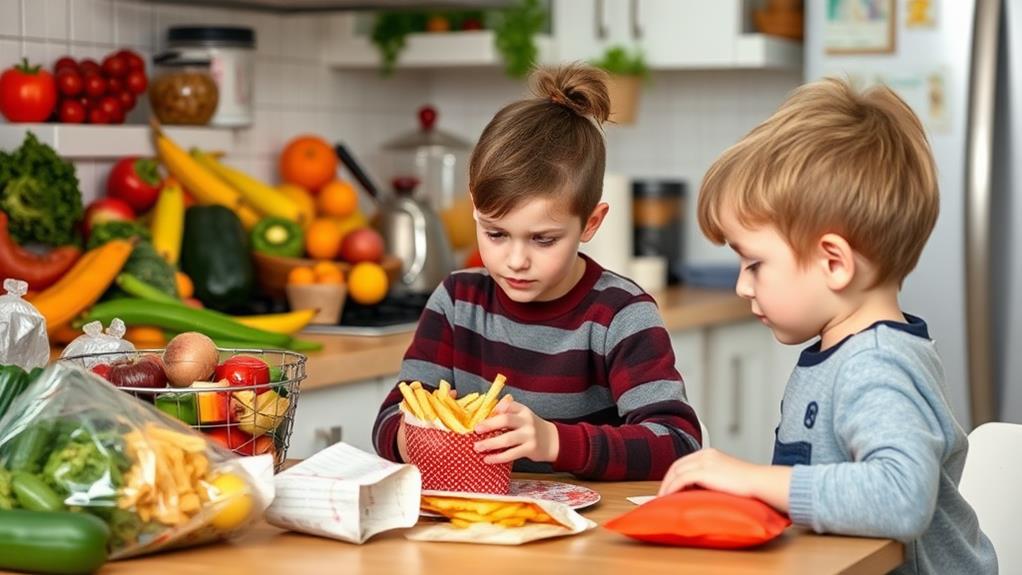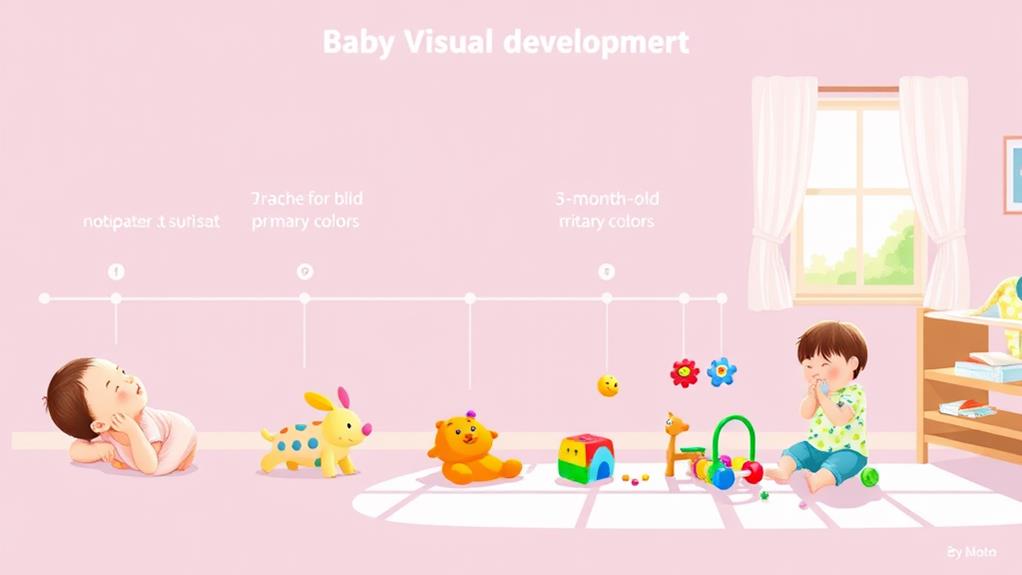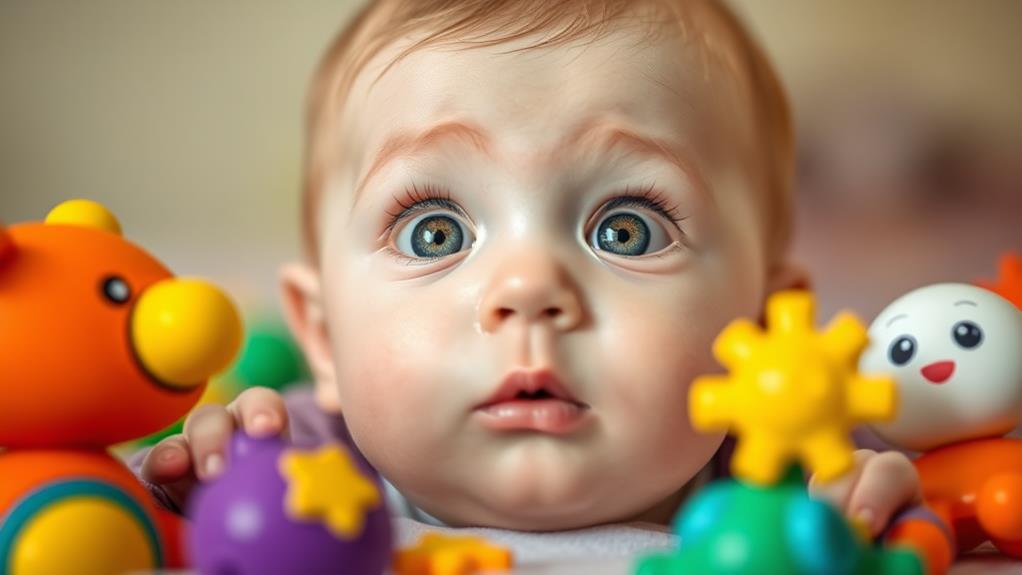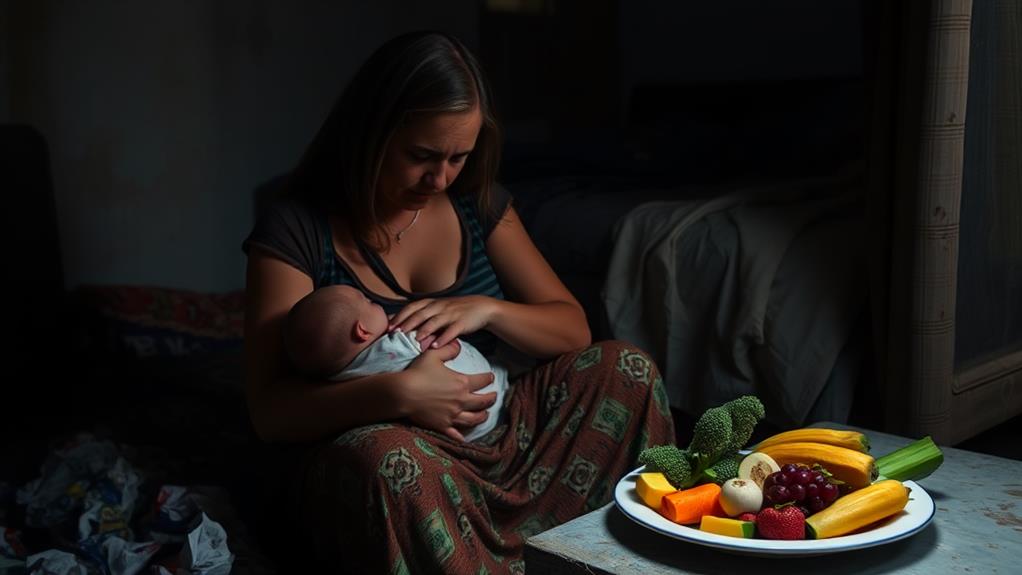When you're looking to help your kids gain weight healthily, it's important to focus on nutrient-dense options that not only add calories but also pack in essential vitamins and minerals. Think about incorporating foods like avocados, nut butters, and full-fat dairy into their meals. You'll find that protein-rich choices such as eggs and Greek yogurt, alongside wholesome carbohydrates like quinoa and whole grain pasta, can make a significant difference. Curious about how these foods can enhance your child's diet and support their growth? Let's explore some specific options that might surprise you.
Avocado
Avocado is a powerhouse of nutrients that can help kids gain weight in a healthy way. This creamy fruit is packed with healthy fats, fiber, and vitamins that your little ones need for growth and energy. Imagine spreading avocado on toast or mixing it into a smoothie—yum!
You can easily sneak avocados into meals. Why not add them to your child's favorite tacos or make a tasty guacamole for dipping? Kids love to dip, and guacamole makes veggies way more fun to eat.
Plus, avocados can be a great addition to salads, making them creamy without all the extra calories.
What's even better? Avocados are super versatile. They can be blended into desserts, like chocolate mousse, without anyone even knowing they're eating something healthy. Who knew healthy eating could taste so good?
Just remember, it's all about balance. While avocados can help with healthy weight gain, it's important to include a variety of other foods in your child's diet too.
Nut Butters
Nut butters are another fantastic option for helping kids gain weight in a nutritious way. They're packed with healthy fats, proteins, and vitamins that can boost your child's calorie intake. You can find nut butters made from peanuts, almonds, cashews, and even sunflower seeds, so there's something for every taste!
Spread nut butter on whole-grain bread for a delicious sandwich, or mix it into smoothies for an extra creamy texture. If your kid loves fruit, try pairing apple slices or bananas with nut butter for a tasty snack. It's like a party in their mouth!
Don't forget about the fun of making your own nut butter at home. With a food processor, you can blend roasted nuts until smooth—add a pinch of salt or a drizzle of honey for extra flavor.
Just keep an eye on portion sizes since those creamy spreads can be calorie-dense. A little goes a long way!
Nut butters can be a yummy addition to your child's diet, making healthy weight gain not only possible but enjoyable too. So go ahead, get nutty with those spreads!
Whole Grain Pasta
Whole grain pasta is an excellent choice for kids looking to gain weight in a healthy way. Unlike regular pasta, whole grain pasta packs in more nutrients and fiber, which means it helps keep you full and energized longer. When your kids eat whole grain pasta, they're getting the good stuff, like vitamins and minerals that help their bodies grow strong.
You can easily whip up a delicious meal with whole grain pasta! Try tossing it with some olive oil, veggies, and a sprinkle of cheese. Or, if your kids love sauce, mix in their favorite marinara or pesto. You'll not only make their taste buds happy, but you'll also sneak in some extra calories without them even noticing!
Plus, whole grain pasta is super versatile. You can add protein sources like beans or chicken to make it even more filling.
If your kids are hesitant to try new things, make it a fun family cooking night! Let them help out in the kitchen, and they might just discover they love it.
Full-Fat Dairy
Full-fat dairy products are an excellent way to help your kids gain weight in a nutritious manner. Think of creamy whole milk, rich yogurt, and indulgent cheese.
These tasty options not only pack in calories but also provide essential nutrients like calcium and vitamin D, which are super important for growing bones.
Swapping out low-fat versions for full-fat can make a big difference. A little extra fat can help your kids feel full and satisfied, keeping them from reaching for less healthy snacks.
You can whip up delicious smoothies using full-fat yogurt or milk, adding fruits and even a spoonful of nut butter for an energy boost.
Cheese is another fantastic choice. Sprinkle some over their favorite pasta or throw it into a quesadilla for a melty treat.
And let's not forget ice cream! It's a fun way to mix in healthy additions like fruit or nuts.
Quinoa
Quinoa is a powerhouse grain that can help your kids gain weight while providing essential nutrients. It's packed with protein, which is fantastic for growing bodies. Plus, quinoa is gluten-free, making it a great option for kids with dietary restrictions.
You can easily stir it into salads, mix it with veggies, or even use it as a base for a hearty bowl.
When cooking quinoa, it's super simple! Just rinse it, boil it, and let it fluff up like magic. Your kids will love its nutty flavor and chewy texture. You can sneak in some extra calories by adding olive oil or butter—what kid doesn't enjoy a little drizzle of goodness?
Try making a quinoa stir-fry or a quinoa casserole with their favorite ingredients. You'll be amazed at how versatile this grain is! It can be sweet or savory, hot or cold.
Eggs
Eggs are another fantastic food for helping kids gain weight while providing a wealth of nutrients. They're packed with protein, which is essential for growing bodies. Just one large egg contains about 6 grams of protein and a good amount of healthy fats, which can help your child bulk up in a nutritious way.
Plus, eggs are super versatile! You can scramble them, fry them, or whip them into an omelet with veggies and cheese.
Encouraging your kid to enjoy eggs can be a fun adventure in the kitchen. Want to get creative? Try making egg muffins or adding them to a breakfast burrito with beans and avocado. Not only do these dishes taste great, but they also add extra calories and nutrients.
Don't forget about the yolk! It's where most of the nutrients live, so using whole eggs is the way to go. Plus, eggs cook quickly and can be a lifesaver on busy mornings.
Bananas
Bananas are a powerhouse of nutrition, making them an excellent choice for kids looking to gain weight. They're not just tasty; they're packed with calories and good-for-you nutrients. A medium banana has about 105 calories, which is fantastic for those needing a little extra energy.
Plus, they contain healthy carbohydrates that provide fuel for playtime and school.
What's even better? Bananas are super versatile. You can slice them into your breakfast cereal, blend them into smoothies, or even enjoy them as a quick snack on the go. Kids love their natural sweetness, so you won't hear any complaints when you serve them up.
If you want to kick it up a notch, try pairing bananas with peanut butter or yogurt. This combo not only boosts the calorie count but also adds protein, making it a perfect power snack.
Oatmeal
Starting your day with a warm bowl of oatmeal can be a game-changer for kids who need to gain weight. Oatmeal isn't just a tasty breakfast option; it's also packed with nutrients. When you mix in some milk, honey, or fruits, you can turn it into a calorie-dense meal that kids will love.
You can customize oatmeal however you like. Want a little crunch? Add some nuts or seeds! Feeling fruity? Toss in berries or sliced bananas for extra flavor. Plus, oatmeal is high in fiber, which helps keep little tummies full and happy.
If your kids are always on the go, oatmeal is super easy to prepare. You can make it in just a few minutes on the stove or even overnight in the fridge.
And let's be honest, who doesn't love a warm, cozy bowl of oats?
Sweet Potatoes
Oatmeal's a fantastic breakfast, but sweet potatoes offer a delicious and nutritious option for lunch or dinner that can help kids gain weight.
These vibrant, orange veggies are packed with vitamins and minerals, making them a powerhouse for growing bodies. You can bake, mash, or even fry them into crispy fries—who doesn't love fries, right?
Sweet potatoes are loaded with carbohydrates, which provide energy for playtime and school. Plus, they contain healthy fats and fiber, helping kids feel full and satisfied. You might even want to sprinkle a little cinnamon on top for extra flavor. Trust me, it makes everything taste better!
You can also pair sweet potatoes with other healthy foods. How about serving them alongside some grilled chicken or a tasty veggie stir-fry? The options are endless!
And don't worry if your kids are picky; a little creativity can go a long way. You can make sweet potato pancakes or even smoothies. Yes, smoothies!
Cheese
Cheese is a fantastic way to boost your child's calorie intake while adding flavor to their meals. It's creamy, cheesy goodness can make even the pickiest eaters smile! Packed with protein and calcium, cheese helps your child grow strong and healthy.
Plus, it comes in so many varieties—cheddar, mozzarella, and even goat cheese—that you can easily find one your kid loves. You can sprinkle cheese on veggies, mix it into pasta, or melt it over their favorite dishes.
It's also perfect for snacks! Try string cheese or cheese cubes paired with whole-grain crackers. They're fun to eat and provide extra energy.
If your child is adventurous, get them involved in cooking. They can help make a cheesy pizza or a delicious quesadilla! It's a great way to bond and sneak in some nutrition.
Just remember, moderation is key! Too much cheese can lead to excess calories. Balance it with other nutritious foods.
Salmon
Including salmon in your child's diet is an excellent way to boost their weight gain while providing essential nutrients. This fish isn't just tasty; it's packed with healthy fats, protein, and omega-3 fatty acids, which are super important for growing kids.
You might think fish is just for fancy dinners, but trust me, it can be fun to prepare, too! Try grilling, baking, or even making salmon patties. Kids love finger foods, and salmon patties can be a hit! Plus, you can sneak in some veggies to really amp up the nutrition.
If your child's not a fan of fishy flavors, no worries! A little lemon juice or a sprinkle of their favorite seasoning can make all the difference.
And guess what? Eating salmon can help with brain development, so it's a win-win! Your child gets to enjoy a delicious meal while fueling their body and mind.
Chia Seeds
Chia seeds are a fantastic addition to your child's diet if you're looking to help them gain weight healthily. These tiny seeds pack a powerful punch of nutrition! Just two tablespoons of chia seeds contain about 140 calories, along with lots of fiber and healthy fats.
They're great for keeping your child full and satisfied. You can sprinkle chia seeds on yogurt, oatmeal, or smoothies. They even work well in baked goods like muffins or pancakes!
When they absorb liquid, they expand and create a fun, gel-like texture that kids often find amusing. Plus, they're a great source of omega-3 fatty acids, which are important for brain development.
Want a quick snack idea? Mix chia seeds with some milk (or a milk alternative) and a bit of honey, let it sit for a few hours, and you've got a delicious chia pudding!
Your kids can even help with the mixing—it's a fun way to get them involved in the kitchen.
Lentils
Lentils are a powerhouse of nutrition that can help your child gain weight in a healthy way. These little legumes are packed with protein, fiber, and essential vitamins and minerals.
They're not just healthy; they're also super versatile! You can toss them into soups, mix them with rice, or even use them in veggie burgers.
When you cook lentils, they soak up flavors like a sponge, making them a tasty addition to almost any meal. Plus, they're an excellent source of energy, which is perfect for growing kids who need fuel for playtime and school.
If your child enjoys a little crunch, try adding some lentil salad to their lunchbox. It's colorful, fun, and loaded with nutrients!
Don't forget, lentils can also help with digestive health, thanks to their high fiber content. If your child loves adventures, think of lentils as their secret weapon for staying energized and strong.
Dark Chocolate
When it comes to tasty treats that can support your child's weight gain, dark chocolate often gets overlooked. It's not just a delicious snack; it packs a nutritious punch!
Dark chocolate is rich in healthy fats, which can help your kiddo gain weight in a healthy way. Plus, it's loaded with antioxidants, which are great for overall health.
You can encourage your child to enjoy dark chocolate by adding it to smoothies or sprinkling it over oatmeal. Not only does it make these meals sweeter, but it also gives them an energy boost!
When choosing dark chocolate, aim for one with at least 70% cocoa. This way, you get more of the good stuff and less sugar.
Coconut Milk
Coconut milk is an excellent choice for kids looking to gain weight healthily. It's creamy, delicious, and packed with healthy fats that can help your child put on those extra pounds in a nutritious way. Not only does it taste great, but it's also super versatile! You can add it to smoothies, soups, or even use it in baking.
It's rich in medium-chain triglycerides, which can provide quick energy and help support growth. Plus, coconut milk is dairy-free, making it a perfect option for kids who are lactose intolerant. If your little one enjoys tropical flavors, they'll love the taste!
Try adding coconut milk to their morning oatmeal or cereal. You can also mix it with fruits like bananas and mangoes for a yummy smoothie that feels like a treat.
And don't forget about coconut milk in curries or sauces—your child might just discover a new favorite dish!
Greek Yogurt
Greek yogurt is a powerhouse of nutrition that can greatly aid in healthy weight gain for kids. Packed with protein, it helps build strong muscles and keeps little bellies full. You know how important it's to eat well, and Greek yogurt is a tasty way to do just that!
Rich in calcium, it supports growing bones, making it a perfect snack or meal addition. You can mix it with fruits, sprinkle in some granola, or even swirl in honey for a sweet treat. The options are endless! Plus, it's thicker and creamier than regular yogurt, which kids usually love.
Feeling adventurous? You can use Greek yogurt as a base for smoothies, adding in some spinach or berries for a boost. Sneaky, right? It's a great way to pack in nutrients without them even noticing!
And let's not forget about the probiotics! These good bacteria keep tummies happy and can help with digestion.
Dried Fruits
Dried fruits are a delicious and convenient option for kids looking to gain weight in a healthy way. They pack a powerful punch of energy and nutrients, making them perfect snacks for your little ones. With options like raisins, apricots, and figs, there's something to please every palate. Plus, they're easy to toss into lunches or enjoy during snack time.
One of the best things about dried fruits is their high calorie content. Unlike fresh fruits, drying them concentrates their sugars, giving them a sweet and chewy texture. This means kids can munch on a handful and get a good boost of energy. You can even mix dried fruits with yogurt or cereal for a tasty breakfast that's sure to delight.
But remember, moderation is key! While dried fruits are nutritious, they can be high in sugar. Pairing them with other healthy foods can help balance their sweetness.
Nuts and Seeds
Nuts and seeds are fantastic powerhouses of nutrition that can help kids gain weight in a healthy way. They're packed with healthy fats, protein, and fiber, making them a perfect snack option. You mightn't know it, but just a small handful of nuts can pack a serious punch of calories. Almonds, walnuts, and peanuts are great choices to munch on. Plus, they're super easy to throw in your backpack for school!
Seeds, like chia and sunflower seeds, are also excellent options. Chia seeds can be added to smoothies or yogurt, while sunflower seeds make a crunchy topping for salads. And don't forget about pumpkin seeds! They're not just for Halloween; they're loaded with nutrients and can be eaten raw or roasted.
You can even sneak nuts and seeds into your meals. Toss them into oatmeal, sprinkle them on pancakes, or blend them into smoothies for an extra boost.
Hummus
Hummus is a delicious and nutritious dip that can be a game-changer for kids looking to gain weight. Made from chickpeas, tahini, and olive oil, it's packed with healthy fats and protein. This means it can help your child bulk up without feeling stuffed!
Plus, hummus is super versatile. You can spread it on sandwiches, dip veggies in it, or even use it as a pasta sauce. Yum!
One of the best parts about hummus is how easy it's to make. You just blend the ingredients and voilà! You've got a tasty treat. If you want to add more calories, you can mix in some extra olive oil or even a bit of avocado. Your kids won't even notice the difference, and they'll be getting the healthy fats they need.
Don't forget about the fun factor! Hummus comes in many flavors, like roasted red pepper or garlic, so you can keep things exciting.
Serve it at snack time or as a side dish. Your kiddos will love dipping and munching away, all while getting the nutrition they need to grow strong and healthy. Who knew gaining weight could be this tasty?
Smoothies
Smoothies are another fantastic option for kids who need to gain weight in a healthy way. They're not just delicious; they can pack a real nutritional punch! You can whip up a smoothie with fruits, veggies, and other goodies that make it a calorie-dense treat. Imagine blending bananas, peanut butter, and whole milk for a creamy delight that's both tasty and filling.
Get creative! Toss in some spinach for extra vitamins or throw in oats for added fiber. You won't even taste them, but they'll make your smoothie even healthier. You can also try using yogurt, which adds protein and calcium, or even chia seeds for a little crunch and healthy fats.
Don't forget to involve your kids in the process! Let them pick their favorite flavors, and they'll be excited to enjoy their creations. Plus, smoothies are a great way to sneak in some extra nutrition without them even noticing.
Just remember, the key is to use whole, nutritious ingredients, so your smoothies are more than just a sugary drink. So blend away, and watch those healthy weight gains happen!
Olive Oil
When you're looking to add healthy calories to your child's diet, olive oil is a fantastic choice. This liquid gold isn't just tasty; it's packed with good fats that can help your little one gain weight in a healthy way. You can drizzle it on veggies, mix it into pasta, or use it as a base for salad dressings.
Plus, it adds a yummy flavor that kids usually love!
Not only does olive oil provide those extra calories, but it also contains antioxidants that support overall health. It helps keep their hearts happy and their bodies strong. You can even get them involved in the kitchen by letting them help pour the olive oil.
It's a fun way to teach them about cooking while sneaking in those healthy fats!
Just remember, moderation is key. A tablespoon here and there can go a long way. So, next time you're preparing a meal, think about how a splash of olive oil can boost the nutrition and flavor.
Your child's taste buds—and their growing body—will thank you for it!


